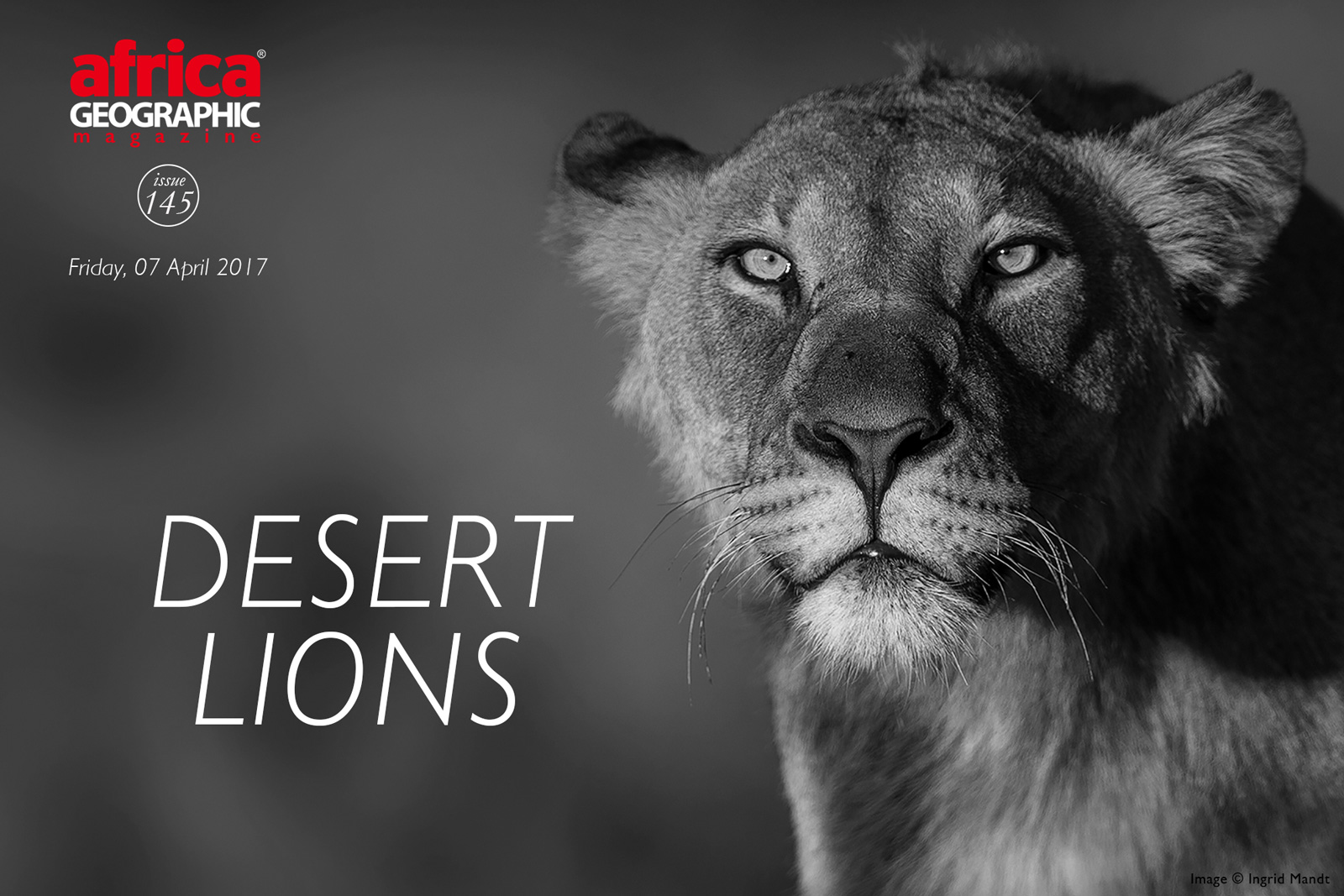
Desert survivors

There are records of lions inhabiting the northern Namib desert along the Skeleton Coast in Namibia as far back as 1934. Desert-adapted lions were observed to be common in the coastal regions, mountains, and rivers between the lower Kuiseb River and the Kunene River. They were believed to be plentiful in the Kaokoveld and along the Kunene valley. The Skeleton Coast National Park was proclaimed in 1967, and since then, they have been put on the map as an iconic species of this unique desert region.
However, today, their population is under threat from human influence, and human-lion conflict is the primary factor holding them back from truly thriving in their natural habitat.
Thankfully, there are good people behind the scenes fighting to ensure the survival of this magnificent, resilient species. Photographer Ingrid Mandt has been photographing the desert creatures of Namibia for 25 years, and here she provides us with a stunning portfolio of the iconic desert-adapted lions of Namibia. This gallery is an inspirational visual account of the resilience and highly adaptive nature of an iconic species facing real survival challenges, and we hope that these photographs move and inspire you to treasure the beauty and strength of one of Africa’s wildest species.

A young female named Angela, about two-and-a-half years old, is part of the Huab River Valley pride. The pride consists of Angela, her sister, XPL 76 and the young female’s two younger brothers. Here, she stalks an oryx from her vantage point during sunset. © Ingrid Mandt
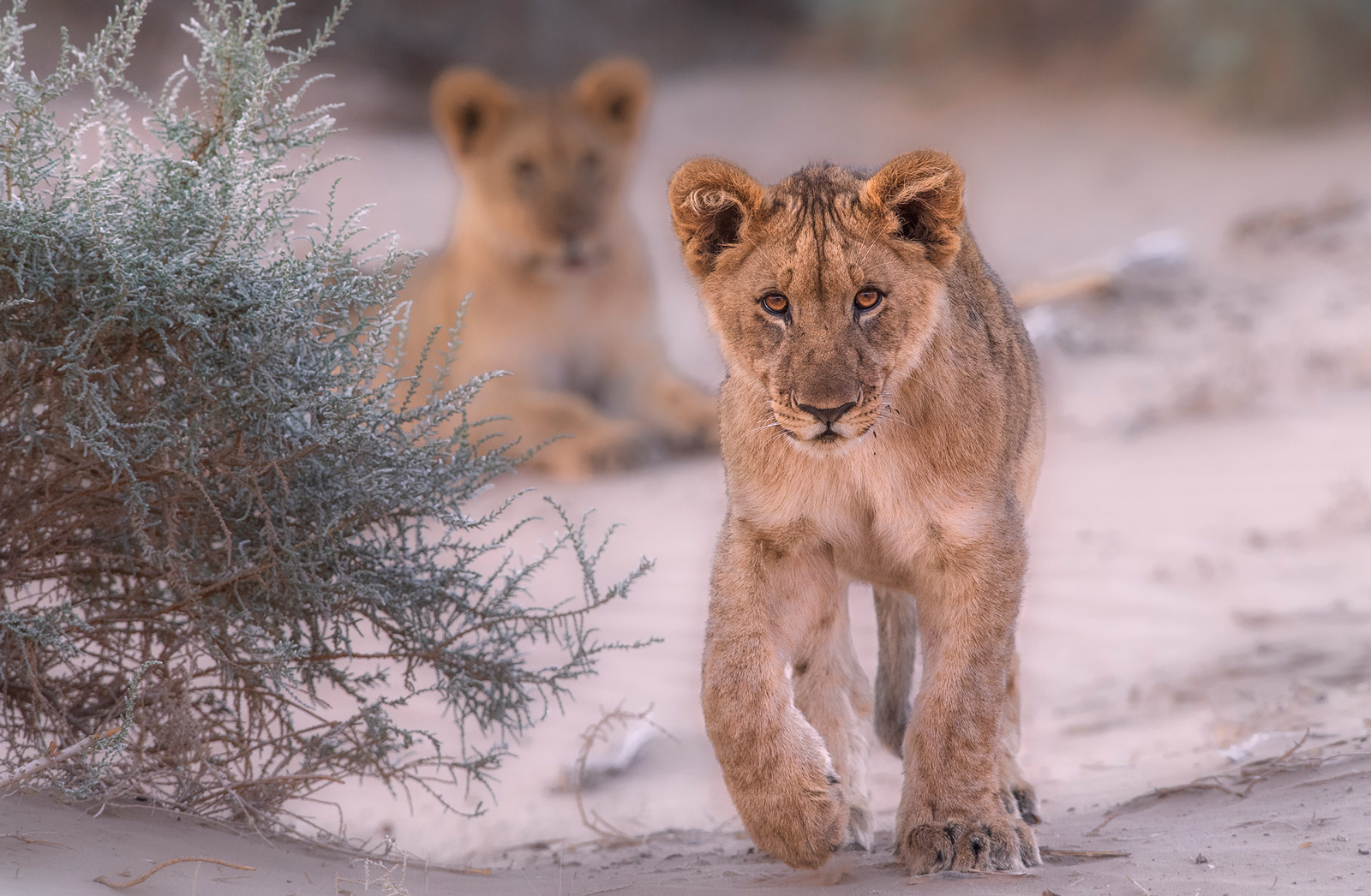
In the foreground, one of six cubs in the Uchab River pride that we had the privilege of spending time with in August 2016. These are the offspring of two young females, “Missy” and “Cheeky” and their first litters sired by “Gretzky” and his brother, XPL 98 (the latter died of anthrax in January 2017 in the Uchab river). © Ingrid Mandt
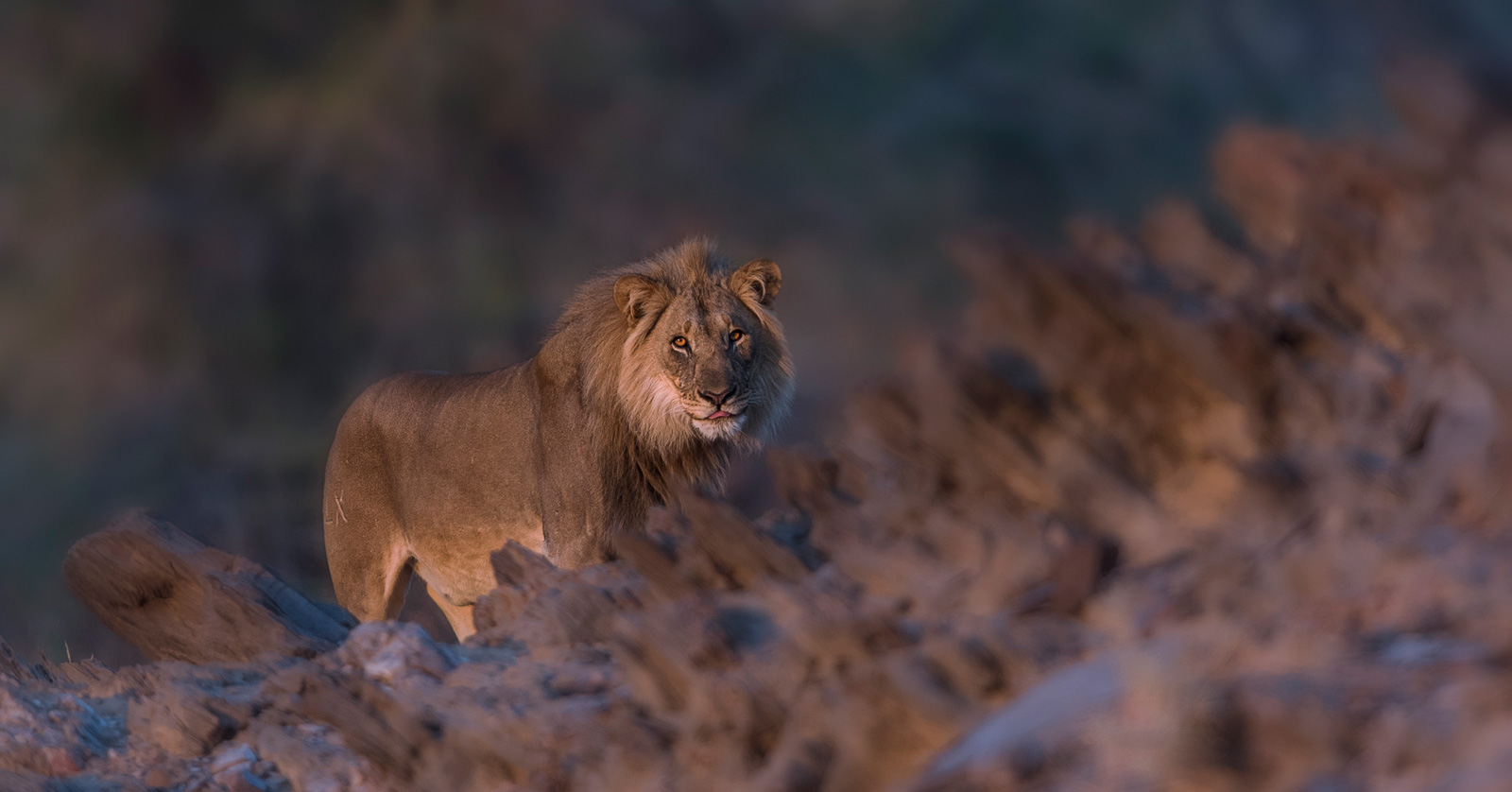
The beautiful, blonde-maned “Gretzky” of the Uchab River pride. He is now the only remaining young male in the pride, with a big responsibility to ensure the entire pride’s survival. © Ingrid Mandt
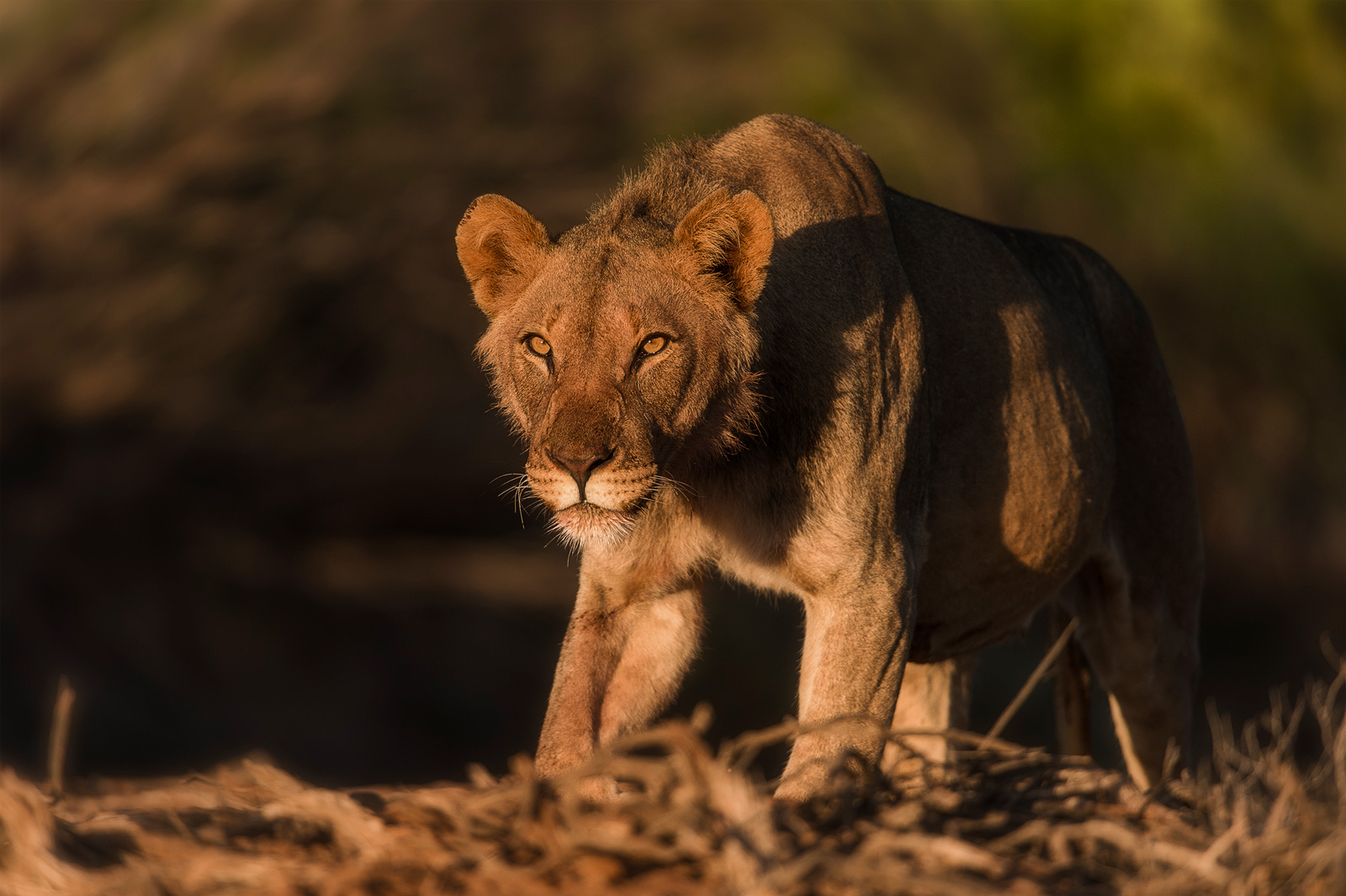
The brother of our “Golden Boy” of the Huab, “Nkosi”, spotted in March 2016 after gorging himself on a fresh zebra kill in the early morning hours. He is a curious and playful young lion. © Ingrid Mandt
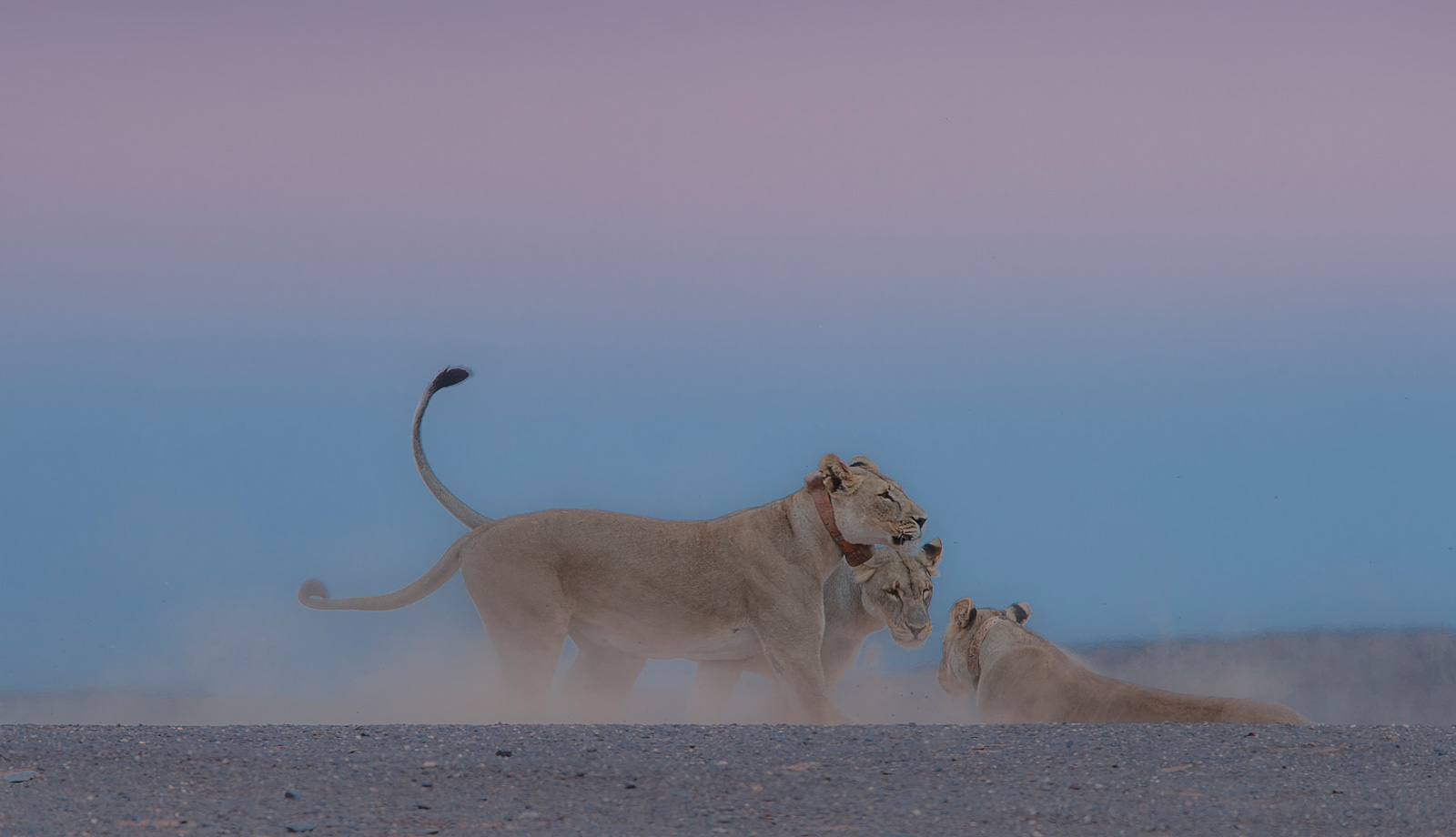
Four Obab lionesses, part of Lovechild’s pride, displaying typical social behaviour in the early hours of the morning – close to the Uniab waterfall on the Skeleton Coast. The nearby waterholes in the Uniab attract springbok and oryx antelope and is a constant source of prey for the lions. © Ingrid Mandt
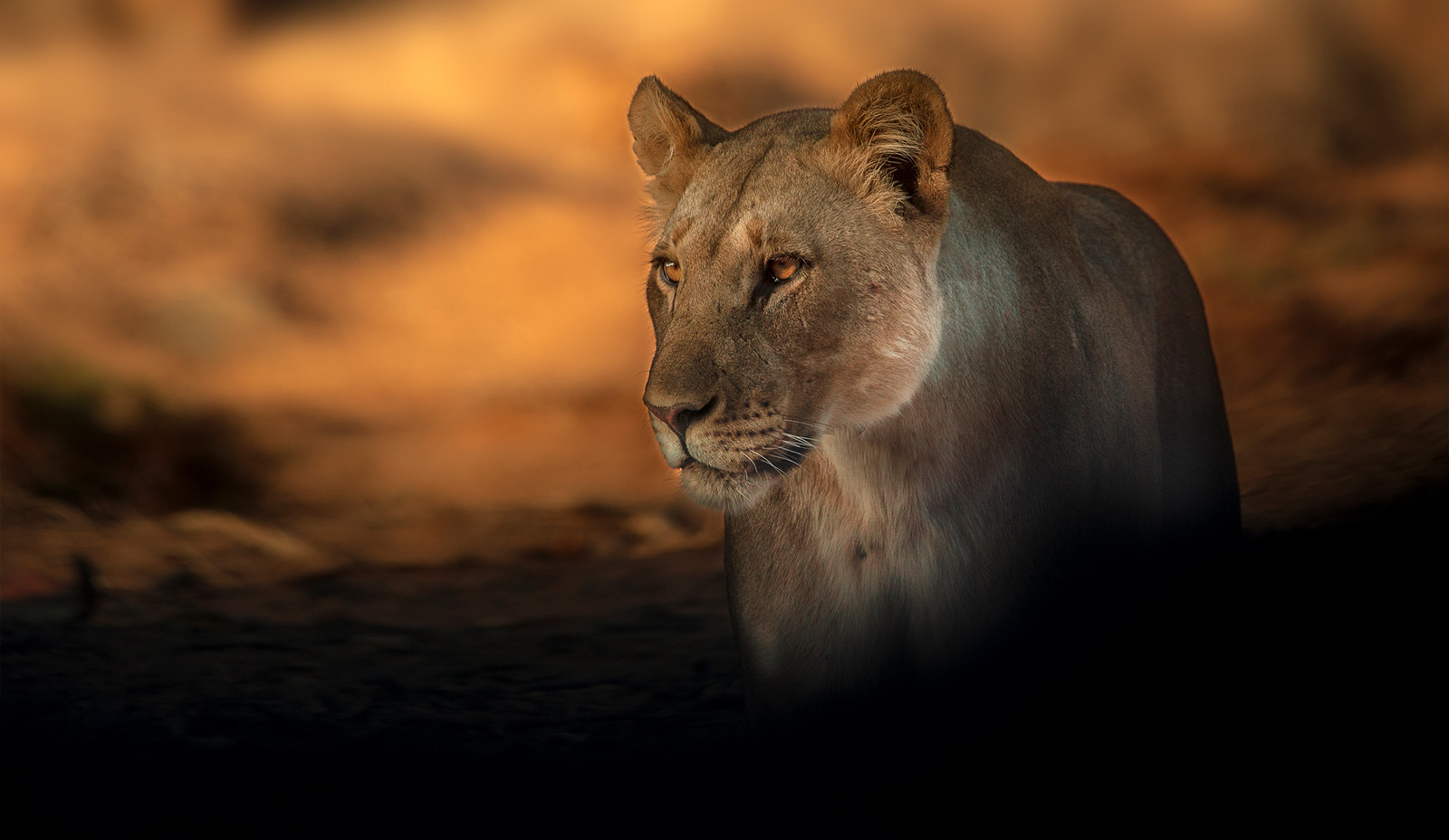
“Missy”, the lady of the Uchab River, making a dramatic appearance in January 2015. © Ingrid Mandt

A beautiful young female and her brother on an oryx kill in the Huab River valley in September 2015. Three months later, we got the devastating news that they had both been shot at Slangpos by a farmer after they caught one of his cows. Ironically, we had attended a meeting earlier that same day at Palmwag Lodge to address human-lion conflict issues. © Ingrid Mandt
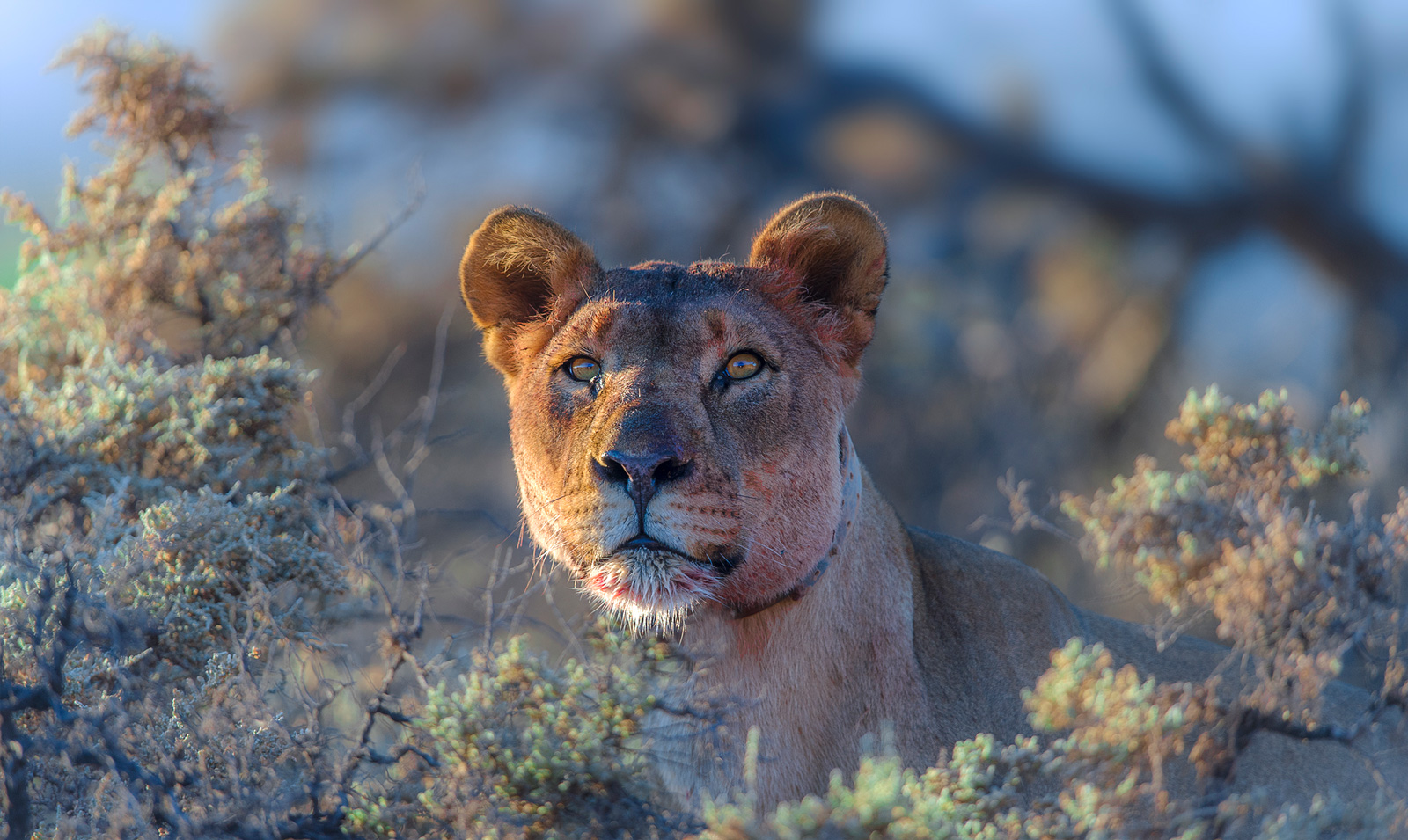
XPL 76, the sister of “Angela”, and part of the two-female coalition, who despite the odds keep the Huab River valley populated with desert-adapted lions. They are the “Queens of the Huab” – resilient, formidable and successful hunters who have lost many cubs to human-lion conflict incidents over the years. © Ingrid Mandt
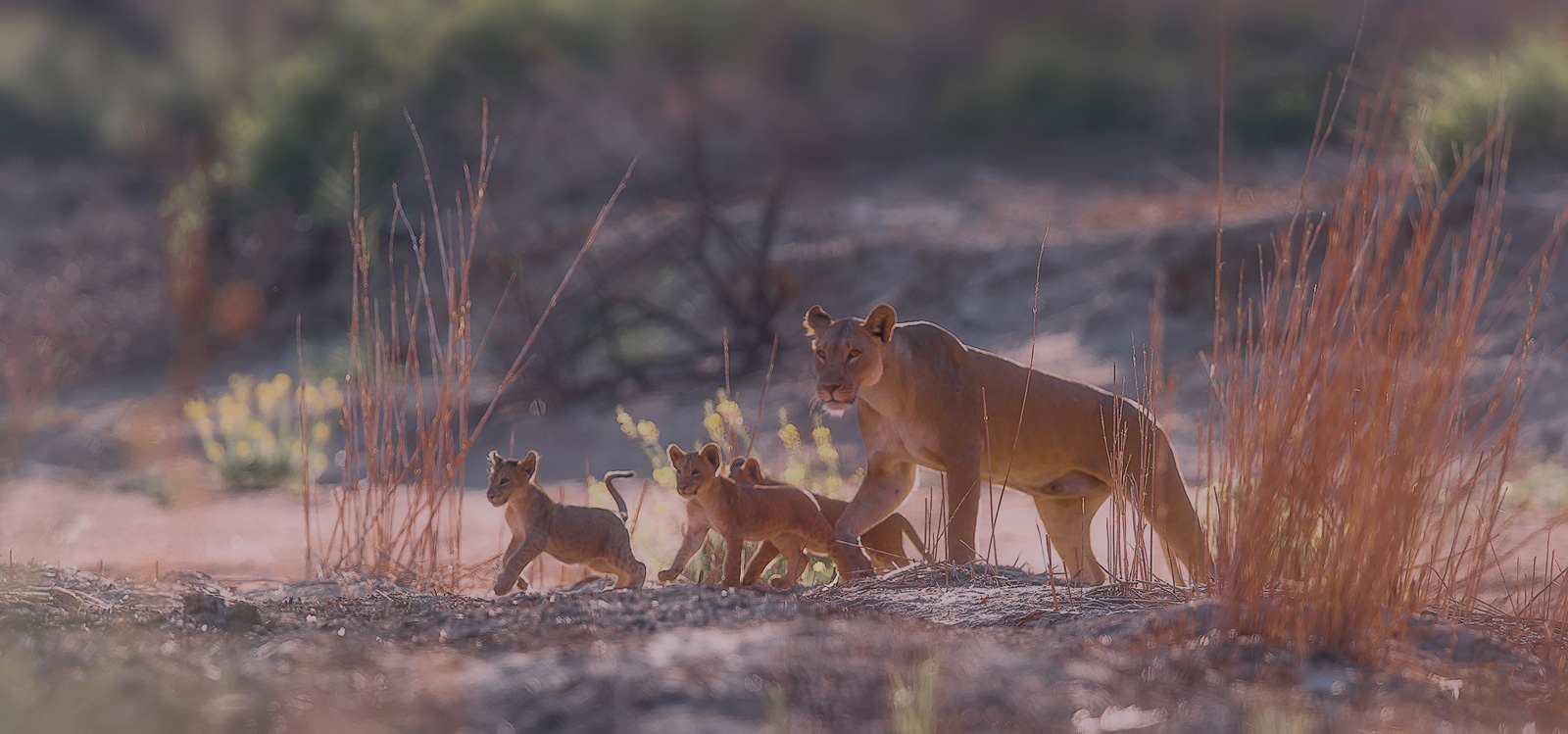
New life and hope in the Ugab River. An uncollared female named “Cheeky” proudly presents her three bouncing cubs to the Ugab pride in January 2016. © Ingrid Mandt

“Gretzky”, of the Uchab River pride, shows off his young son. He was harassed by the young cub who could not leave his tail alone! © Ingrid Mandt
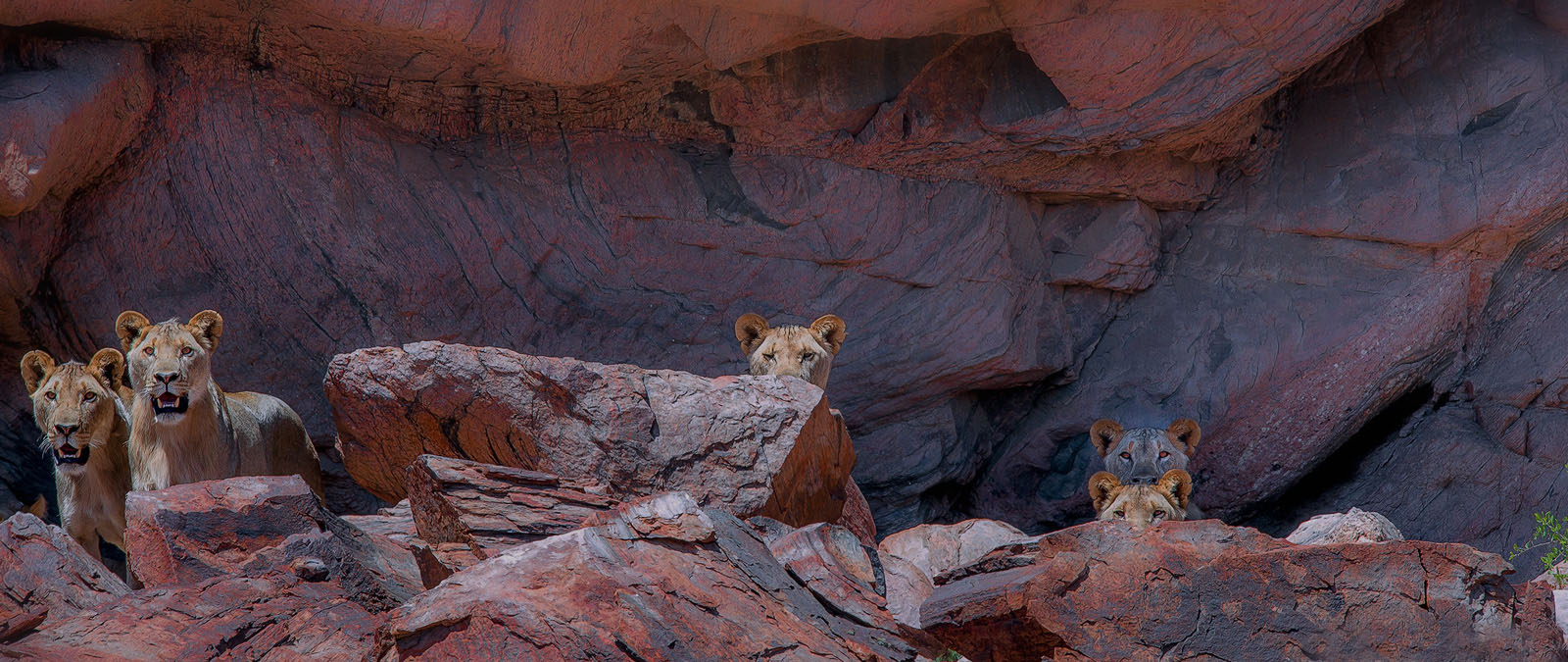
“The Five Musketeers”, made famous by the movie The Vanishing Kings, looking for shade in one of their favourite haunts near the Sawurachab River in January 2014. Herdsmen subsequently killed all five lions in human-lion conflict incidents. © Ingrid Mandt
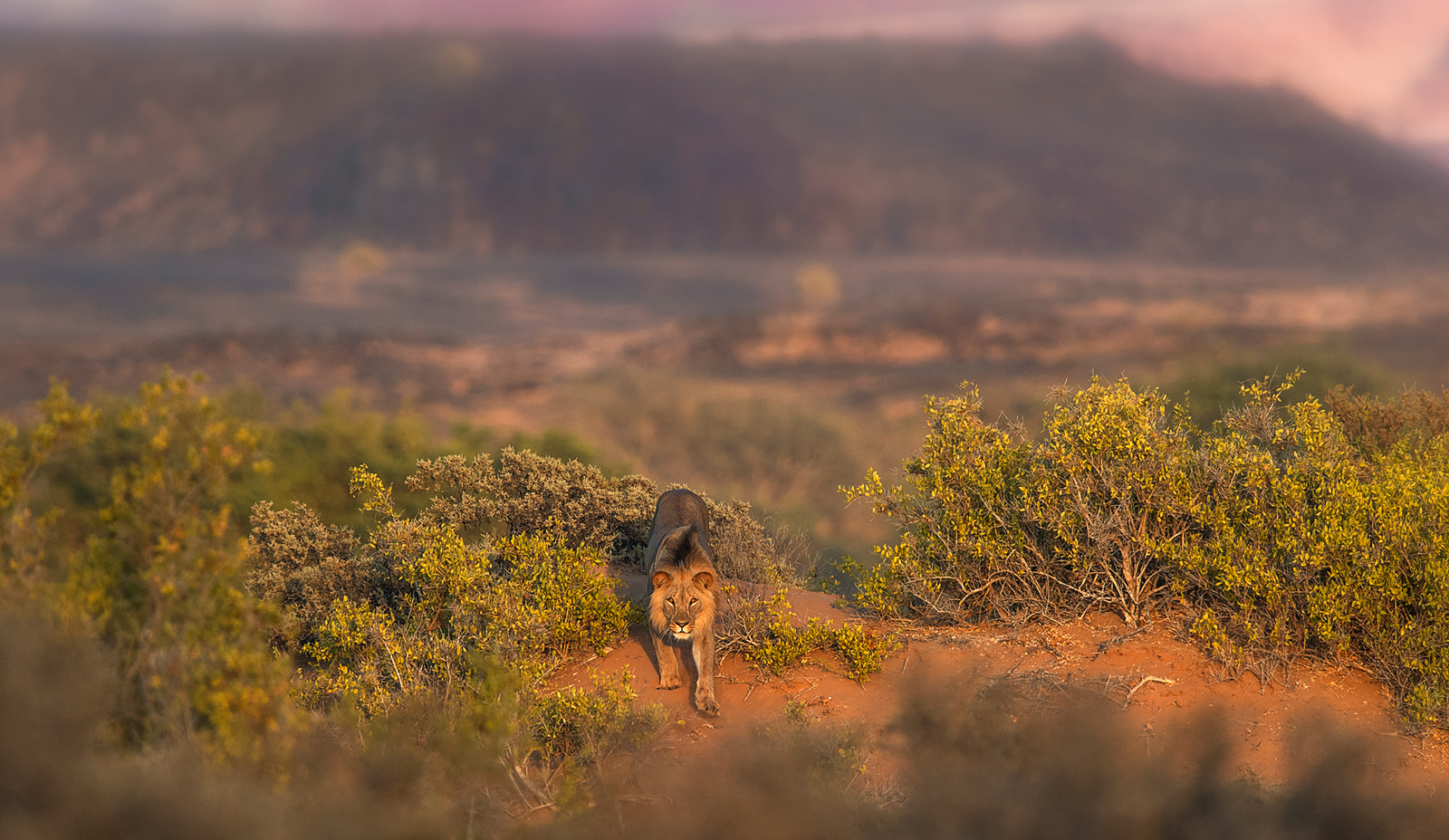
“Nkosi”, which means “King” in the Nguni language, our golden boy of the Huab River valley, seen here in December 2016 taking a stroll. Still young, about three-and-a-half years old, he is bound to leave the pride with his brother soon – hopefully to form a coalition looking for other females, which is very important to keep the gene pool pure. © Ingrid Mandt
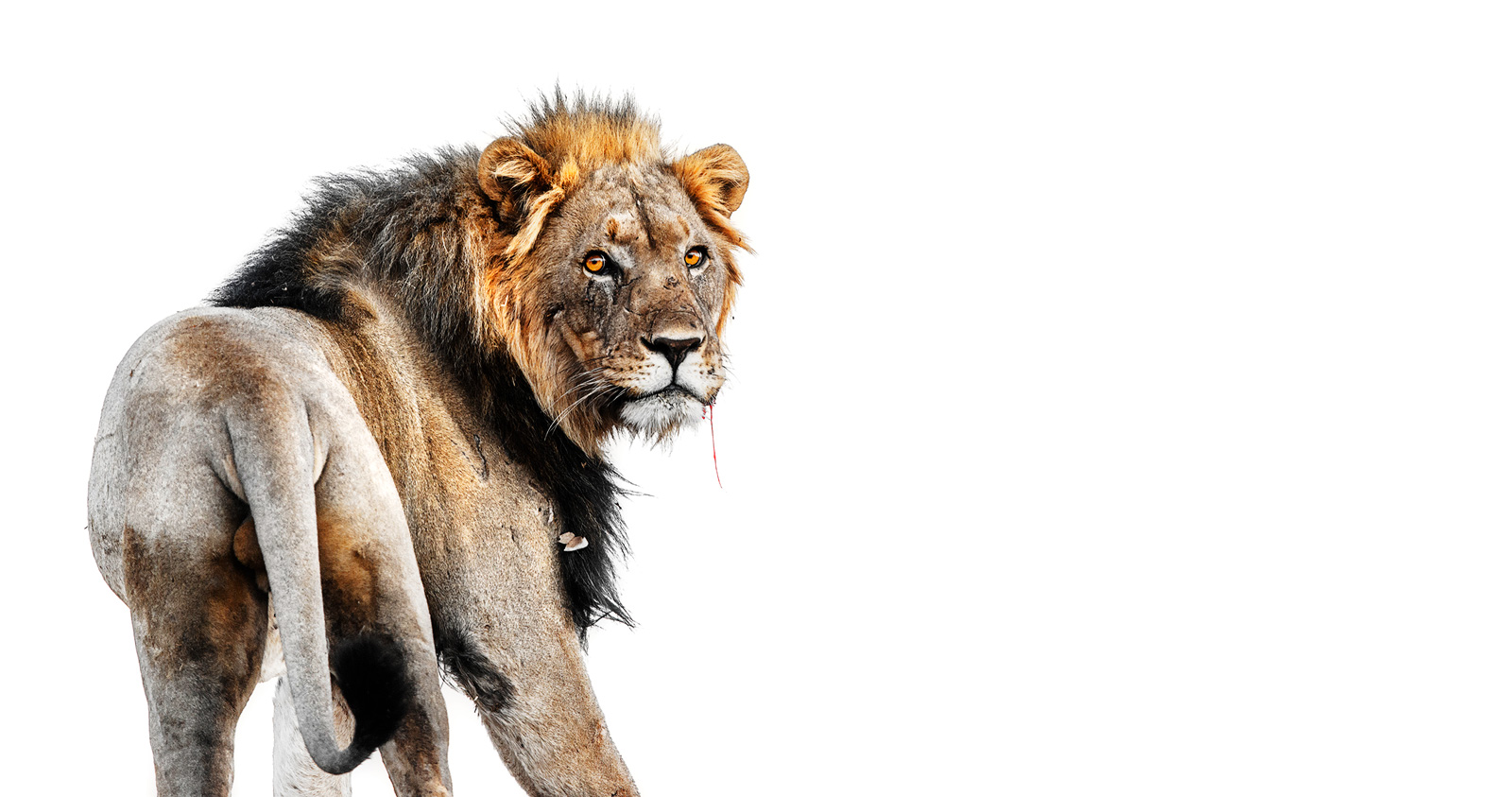
XPL 87, an adult male of the Orowau/Hoanib prides near Gorra in the Orowau area, leaving his lookout post. This was the last sighting of him just after he got into a huge fight with a coalition partner “Kebbel”, over mating rights with the Orowau females, of which three were in oestrous. © Ingrid Mandt

“Nkosi”, king of the Huab! Lazing on a nicely elevated site to spot his prey against the beautiful backdrop of the Huab Valley – a sight to behold! © Ingrid Mandt

Four of the pride of five Huab lions near Blerpos in the Huab River, December 2016. © Ingrid Mandt

In May 2014, months before the death of the male Lion “Rosh”, (shot in a human-lion conflict incident), his offspring are seen here in happier days near the Barrab river. The whole pride was together, feasting on a zebra kill. © Ingrid Mandt
ALSO READ: Beach lions again hunting seals and coastal birds in Namibia, after 35 years
To comment on this story: Login (or sign up) to our app here - it's a troll-free safe place 🙂.![]()




